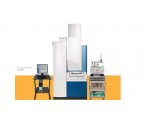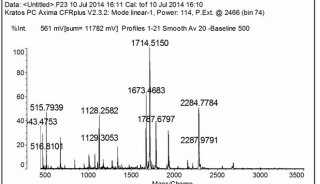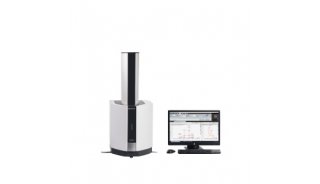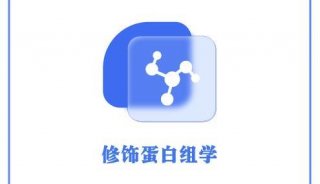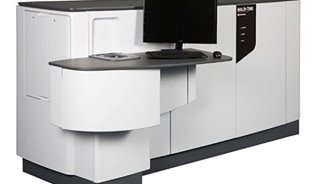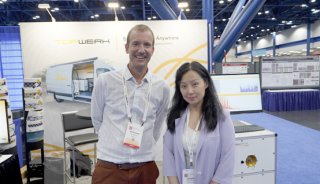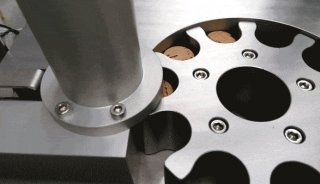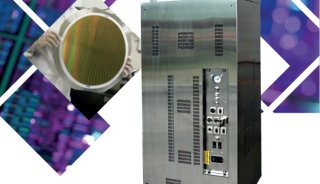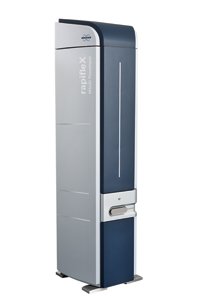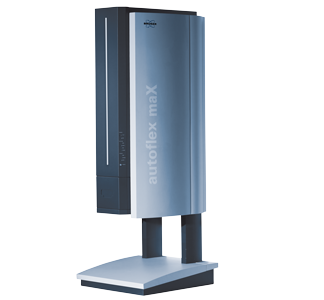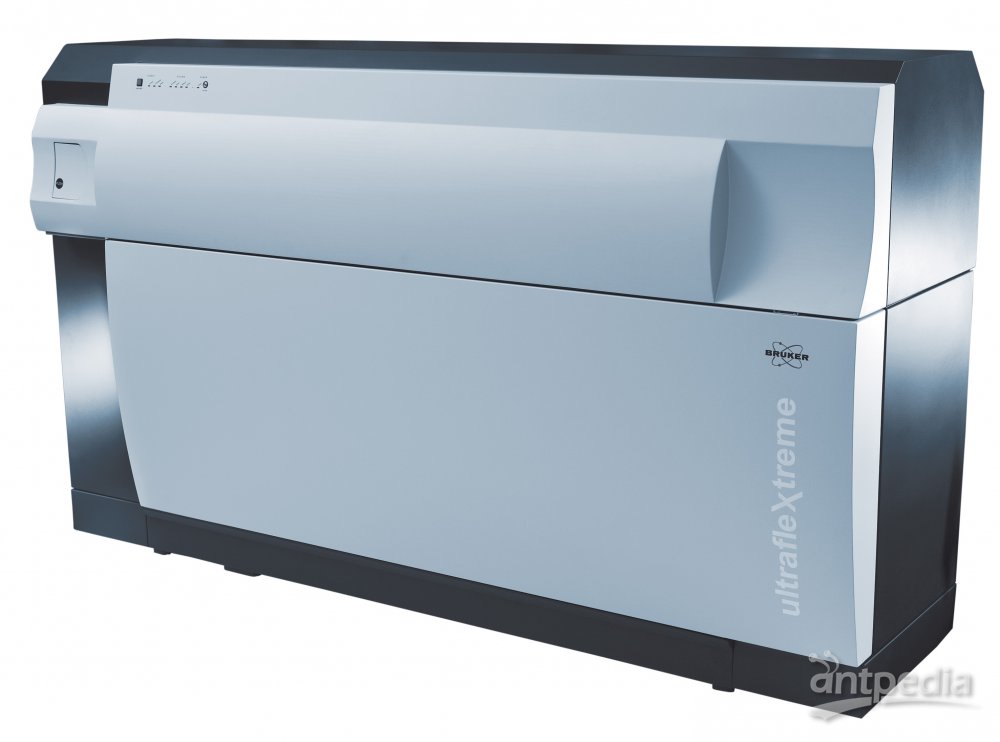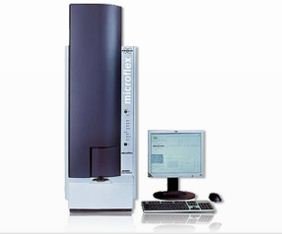ABI/MDS发布新型5800 MALDI TOF/TOF质谱仪
2009年4月9日
Life Technologies' Applied Biosystems公司和它的质谱合作伙伴MDS公司,今天发布AB Sciex TOF/TOF 5800质谱仪,这是近6个月来该公司第二次发布重要的产品。这次发布是跟随他们发布AB Sciex 5500三重四极杆质谱仪和AB Sciex QTrap 5500质谱仪之后,又一款新产品。
在发布时,ABI和MDS官方都称其为“最快和最灵敏的基于MALDI的质谱仪”。该仪器上使用的新技术包括:1 kHz的OptiBeam同轴激光,“可进行超快的离子化,加速蛋白质的分析。” MDS的分析部总裁Andy Boorn在一次电话会议上说。
新型的Dynamic Exit技术进一步提高了速度,“减少了用于蛋白质鉴定所需激光的数量”,Andy Boorn补充说。根据ABI/MDS的说法,5800比其它MALDI系统,提高了蛋白质鉴定10 倍以上的速度,并提高30个百分点的蛋白质鉴定数量。
其它的技术进步包括:系统使用easy access向导程序,提供了单页面的界面,帮助用户建立数据采集参数并加快进程;可编程、自清洗的MALDI离子源更易于维护,并延长了系统运行时间。Boorn说。
Life Technologies质谱部的总监Laura Lauman说,有了5800,科学家们将能在1天内获得以前在其它系统上几周才能获得的数据。“有了这套系统,我们在生物标志物鉴定方面有了重大的飞跃。”。
这套系统,在美国的售价是48.5万美元。
QTrap 5500是进行生物标志物验证和确证的仪器,而5800是进行生物标志物发现的,而且特别针对于鸟枪法(shotgun)蛋白质组学流程。ABI药物和蛋白质组部门的高级主管David Hicks说,虽然目标物鉴定的流程市场很大,但MALDI市场仍然保持着增长。
除此之外,MALDI质谱的核心能力当然在于它是高产出率的皮实的机器(workhorse),特别是对于高通量蛋白质组应用。另一种MALDI应用的增长来源于组织成像,这是由范比特大学的Richard Caprioli教授最早发明的。
Hick说:“5800不是4800 Plus MALDI TOF/TOF的一个替代型。早期的仪器(4800 plus)保持了我们认为是市场上卖得最好的MALDI TOF/TOF系统,并且它将被继续销售。而5800是该系列仪器的一个补充,它使研究者们可以在实验室老黄牛型的4800和增加了新功能的5800新平台之间进行选择。”
斯坦福大学医学院的癌症早期诊断检测中心的蛋白质组学部门的主管Mark Stolowitz说,他还没有用过这套仪器,但他已经为中心购买了5800,下几个月就会到货。他告诉记者说,他曾经买了Bruker 公司的ultraflex III 仪器,但已经把它卖掉了,为了买更好灵敏度和分辨率的5800。
虽然ABI公司的人员说,相对于做确证,5800这个平台更适合于作生物标志物的发现;Stolowitz教授仍说他将用该平台做更多的确证实验。
他说:“对于我们来说,我们将使用5800做目标物检测,我们正在使用免疫捕获的方式来选择一系列生物标志物,然后酶解它们,再用TOF/TOF来检测其中的肽并确证它们。我们能够在几秒钟内检测到那些个别的样本。
反馈
5800的发布把ABI公司重新放到了质谱届的领导地位上,它的竞争者们虽然没有发布它们的质谱销售业绩,以上说法可能部分来源于一种猜测。但另一种说法是,ABI至少是坐在全球质谱届的前两把交椅上的一个。
在过去的两年,ABI的业务下滑,竞争者们不断推出新技术、在市场上采取进攻策略,迫使ABI进行了防御。
AB Sciex TOF/TOF 5800,正像该公司所说,使研究者可以鉴定出高出以往30个百分比的蛋白,并加速10倍以上的生物标志物发现进程,随着该平台的推出,意味着ABI重回质谱届的头把交椅。
Life Technologies' Applied Biosystems and its mass spectrometry joint-venture partner MDS today launched the AB Sciex TOF/TOF 5800 mass spectrometer, the second major launch by the firms in the past six
months as they try to turn around a slumping mass-spec operation.
The introduction follows the simultaneous launches in October of the AB Sciex Triple Quad 5500 and AB Sciex QTrap 5500, which broke a years-long drought during which the lack of a major introduction in the space
dragged down the mass-spec business for both companies and put them in a position of playing catch-up with competitors.
In launching the 5800, officials from both ABI and MDS called it the "fastest and most sensitive MALDI-based mass spectrometer ever built." New technological improvements to the instrument include a 1 kilohertz
OptiBeam on-access laser, "which provides ultra-fast ionization accelerating the analysis of proteins," said Andy Boorn, president of MDS Analytical Technologies, during a conference call.
Speed is further enhanced by a new dynamic exit algorithm that "minimizes the number of laser shots needed" for protein identification, he added. According to ABI/MDS, the 5800 increases the speed of protein
identification 10 times over other MALDI systems while increasing the number of proteins identified by 30 percent.
Other technological advances offered by the system include an easy access wizard providing a single-page interface that guides users in how to set up acquisition parameters and streamlines the process, and a
programmable, self-cleaning MALDI source for easy maintenance and extended uptime, Boorn said.
Laura Lauman, president of Life Technologies' mass-spectrometry division, said that with the new capabilities of the 5800, scientists would be now able to achieve in one day what would take weeks on other systems.
"With this launch we've taken a giant leap forward in how biomarker studies can now be conducted," she said.
The instrument, which is shipping now, lists for $485,000 in the US.
Unlike the QTrap 5500, directed at biomarker validation and verification, the 5800 is meant for biomarker discovery, in particular, using shotgun proteomics methods, which David Hicks, senior director of pharmaceutical
and proteomics mass spectrometry at Applied Biosystems, said remains a growth market for MALDI, despite a shift in the field toward more targeted workflows.
In addition, core facilities continue to use MALDI mass specs as workhorse instruments, especially for walk-up applications in protein research. And interest is growing in MALDI tissue imaging, a method pioneered by
Richard Caprioli at Vanderbilt University.
The 5800 is not a replacement for the 4800 Plus MALDI TOF/TOF, Hicks said. The earlier instrument remains "what we believe to be the best-selling MALDI TOF/TOF system on the market and it continues to sell at a
healthy clip." Rather, it complements the instrument portfolio, giving researchers a choice between the workhorse 4800 and the new platform with its expanded attributes, he said.
Mark Stolowitz, director of the proteomics core facility at the Canary Center for Cancer Early Detection at Stanford University's School of Medicine, has not yet used the instrument but has purchased one for the facility,
which is set to open in the next few months, based on the data that was presented to him.
He told ProteoMonitor that he had been ready to purchase a Bruker ultraflex III instrument but was sold by the better sensitivity and resolution on the 5800.
While ABI said that the platform is suited for biomarker discovery rather than verification, Stolowitz said his facility will, in fact, be using it to verify discovery experiments.
"In our case, what we're going to be doing with the 5800 is targeted detection where we're essentially going to be using immunocapture to select a series of biomarkers, and then digest them all and then look at those
peptides and confirm them by TOF/TOF," he said. "We can read those individual samples in a couple of seconds."
On the Rebound
The launch is the most recent move by ABI to either restore or maintain — depending on your perspective — its leadership position in the mass spec space. Because its competitors do not disclose their mass-spec
sales figures, getting a firm handle on where ABI places in the space is partly a guessing game, but the consensus view is that the company is one of the top-2 mass spec vendors in the world.
During the past two years, however, both its business and its position in the eyes of researchers have taken a hit as its own technological drought and aggressive technology development and marketing by competitors
have put ABI on the defensive.
The AB Sciex TOF/TOF 5800, which the companies said enables researchers to identify 30 percent more proteins and speed up the biomarker discovery process 10-fold, follows platform launches in the fall meant to put them back at the top of the mass-spec food chain.






